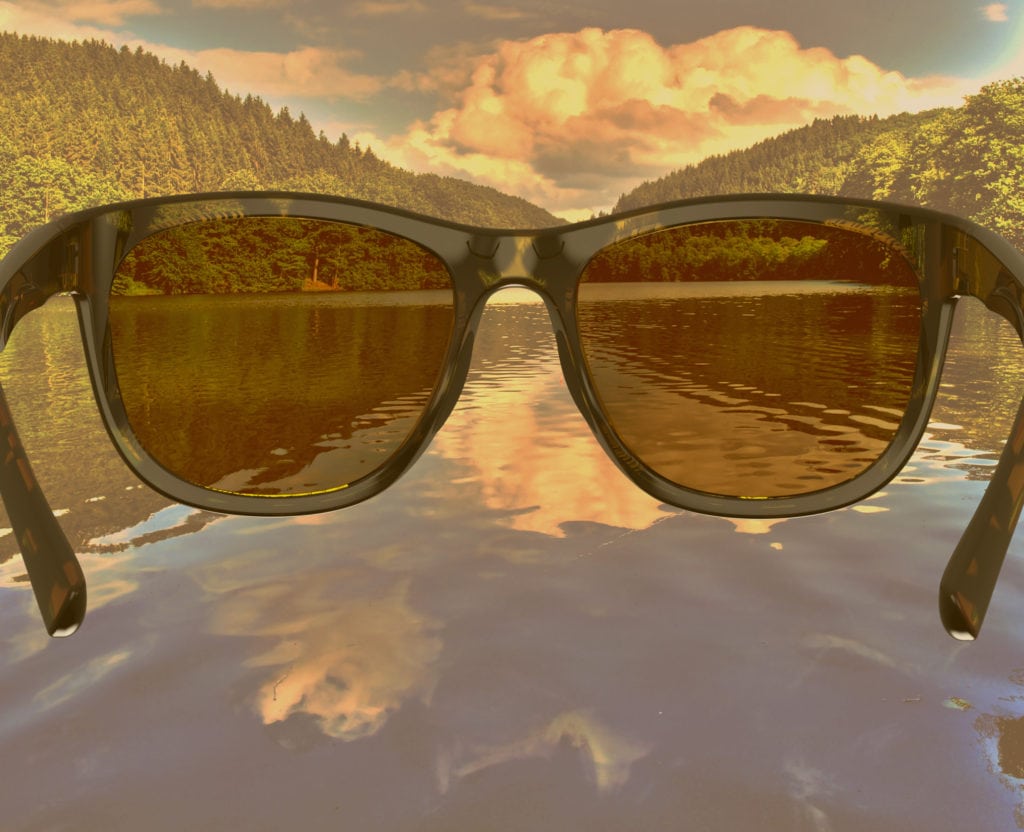The Benefits of Wearing Polarized Sunglasses.
Do you enjoy spending time outside or on the water? Proper eye protection is essential, especially for those extra sunny days. One type of sunglasses that has become increasingly popular for outdoor enthusiasts are polarized sunglasses. These sunglasses not only reduce eye strain but provide 100% UV protection, making them the perfect companion for those who spend time outdoors.
Choosing between polarized and non-polarized sunglasses can be a hard choice if you are not well-versed on the topic. You might be asking questions like: what does polarization even mean, can you tell the difference between good and bad lenses, and what are the benefits?
We’re here to answer those questions!
What Does Polarization Mean?
Essentially, polarization is tinted lenses that reduce glare on horizontal surfaces like water or roads. The waves of light travel in different orientations (vertically, horizontally, and everything in between), and because of this, our eyes perceive the vertical polarized light as glare. It works by filtering the unorganized light that causes glare from these surfaces, thereby diminishing the reflection of the sun.

Most sunglasses have a special film that is applied when being manufactured. This film contains a chemical compound, which is made up of particles that align the light in rows; think of blinds on a window. The microscopic filter is created which blocks light waves orientated in the same direction. This is what makes your sunglasses polarized!
What are the Benefits of Polarized Sunglasses?
These sunglasses offer numerous benefits for outdoor enthusiasts, including:
- Reduced Eye Strain: It reduces eye strain by removing the glare from reflective surfaces, such as water. Meaning you can spend more time out in the sun without experiencing eye strain.
- Improved Clarity: Polarized lenses also improve clarity by enhancing color contrast and reducing distortion. This is beneficial for fisherman and boaters, where clear vision out on the water is essential.
- 100% UV Protection: These sunglasses provide 100% UV protection. Which is important for maintaining eye health and preventing long-term damage from the sun's harmful rays.
- Increased Safety: Polarized lenses can also increase safety by reducing the glare from reflective surfaces, such as wet roads or water. This can prevent accidents and improve overall visibility.
What's the Difference Between Good and Bad Polarization?
Not all polarization is created equally. There are a few things to look out for to ensure you are purchasing a high-quality pair of polarized sunglasses. Including a simple test to quality check.
The first way to check for good polarization in sunglasses is looking for a uniform tint across the entire lens, with no blotches or spots. A lot of manufacturers use a "polarized coating" that can rub off or deteriorate over time.
Next is a rotation test. In order to conduct the experiment, you must have two pairs of polarized sunglasses. Take one pair of sunglasses and keep the other directly in front of you.

When you look through both pairs horizontally, you should be able to see through them clearly.
As you rotate the sunglasses in your hands to a 90-degree angle, things change.

When turned, the lenses will block horizontal and vertical light, appearing to be completely black.
Using this same test we will now show you what bad polarization looks like.

If the lenses appear blotchy or uneven like the above image, this is a sign of poor quality polarization.
When you turn lenses to a 90-degree angle, the vertically polarized light (perceived as glare) goes right through the lenses.

This time the blotching is reversed. If molecules of the filtering film are not aligned evenly, they will not reduce glare evenly.
Good polarization can truly make all the difference. At Tifosi Optics, we use a layer of injected polarized material on our sunglasses. Meaning that your polarization will not rub off over time, making high quality sunglasses.
The Downsides of Polarized Sunglasses
While there are numerous benefits to polarized sunglasses, there are a few downsides to consider:
- Difficulty Viewing Digital Displays: Viewing digital screens, such as phones, car screens or GPS can sometimes be difficult while wearing these lenses. This is because the polarized lenses can interfere with the way the screens are designed to be viewed.
- Price: Polarized sunglasses are often more expensive than non-polarized sunglasses, which may not be ideal for everyone. Even here, Tifosi Optics offers a solution by offering a higher quality polarized piece of eyewear at a great value.
When to Choose Polarized Sunglasses?
Polarized sunglasses are an excellent choice for anyone who spends time outdoors, particularly those who spend time out on the water or in sunlight. Some things to consider when deciding if polarized sunglasses are right for you include:
- Water Activities: If you enjoy fishing, boating, or any other water activity, polarized sunglasses can help reduce glare and improve visibility on the water.
- Driving: Polarized sunglasses can also be beneficial for driving, as they reduce the glare from reflective surfaces, such as wet roads.
- Sensitive Eyes: If you have sensitive eyes, polarized sunglasses can provide relief from bright sunlight and reduce eye strain
At Tifosi Optic's our polarized sunglasses are made with a layer of injected polarized material not just a coating like other brands. This means the tint will not peel off making it much more durable. Plus, each lens will block 100% of harmful UV rays. Keeping you protected and squint free all summer long.
Shop Tifosi Polarized sunglasses









